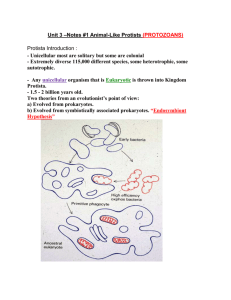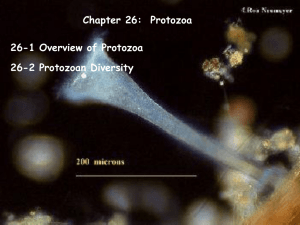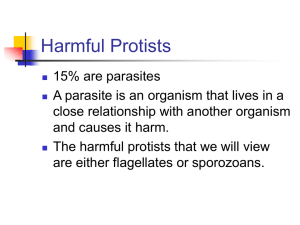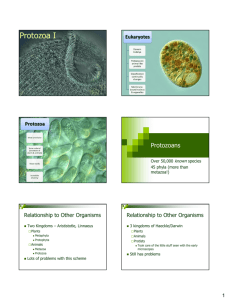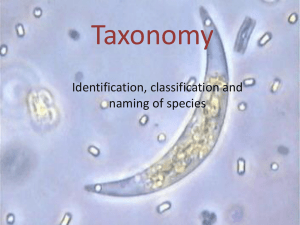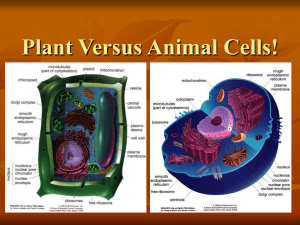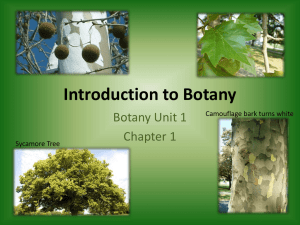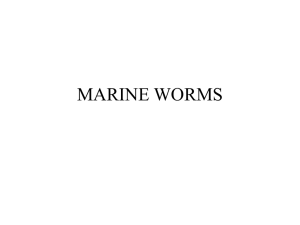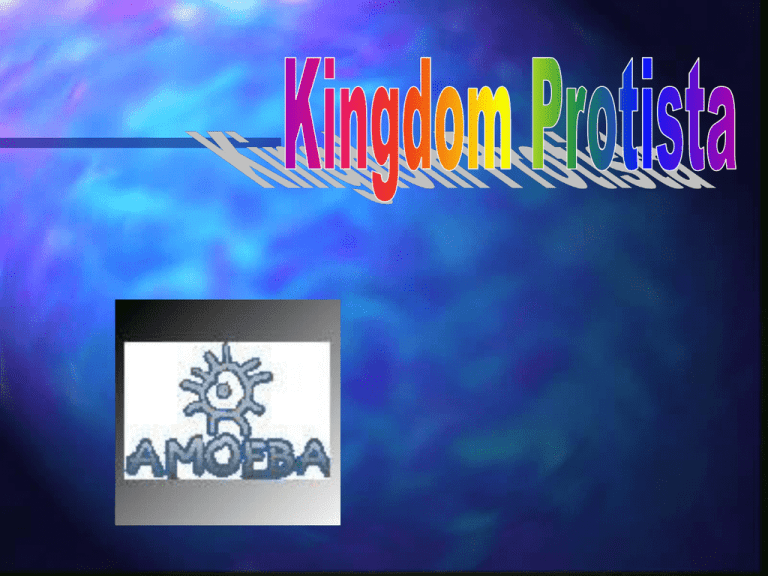
Kingdom Protista
All members of this
Kingdom, are
unicellular or very
simple multicellular
organisms.
Members of this
kingdom have been
around for about 1.5
billion years.
Categories of Kingdom
Protista
There are two major
categories; the
protozoa (animallike) and the
protophyta (plantlike)
General Characteristics of the
Protozoa
1. One -celled
2. Eukaryotic
3. Shape determined by the
cell membrane or a thicker,
elastic membrane called the
pellicle.
4. Reproduce asexually and
sexually.
5. Aquatic
General Characteristics of the
Protozoa continued
6. Heterotrophic
7. Many are motile-use cilia,
flagella or pseudopodia.
8. Important role in food chain
and in the decay process.
9. Dormant protozoa are called
cysts.
10. Two famous protozoa are
the paramecium and the
amoeba.
General Characteristics of the
Protophyta
1. One -celled, filaments and
colonies.
2. Eukaryotic
3. Shape determined by cell
wall.
4. Reproduce asexually and
sexually.
5. Aquatic
6. Phototrophic
7. Motile by cilia or drift in water.
General Characteristics of the
Protophyta continued.
8. Known for their role in the
food chain and for their
contribution to the Earth’s
oxygen supply.
9. Dormant cells are called
spores.
10. Two of the most famous
protophyta are the Euglena
and diatoms.
The Ameba
The common amoeba,
Amoeba proteus, belongs
to the phylum known as
Sarcodina.
It lives in fresh water.
It is an independent cell,
with a nucleus and
cytoplasm.
It has no permanent
organelles.
The Ameba continued
Although the amoeba has
a simple structure, it can
move, reproduce,capture
and ingest food, digest
food, egest wastes, respire
and respond to stimuli.
The Amoeba-Movement
Movement known as
amoeboid
movement.
Uses pseudopods,
formed by the
plasmasol and
plasmagel that
comprise the
cytoplasm of the
amoeba.
Foraminiferans
This is another group of
sarcodinians.
Abundant in the oceans.
They too move by way of
pseudopods.
They are surrounded by
shells made up of calcium.
Eventually the remains of
the shells may form chalk
deposits.
The Paramecium
One of the most complex
protozoa.
Unicellular
Prefers stagnant water.
Has a definite shape(unlike
the amoeba).
Certain parts of the
cytoplasm do certain things.
Paramecium-Basic Anatomy
Cilia
Paramecia move by
way of cilia and
hence are members
of phylum
Ciliophora
Note the hair-like
cilia on this ciliate.
Water Control in the
Paramecium
Formation and Processing of
Food Vacuoles
Food is swept by cilia
into the cell mouth.
Food passes into the
gullet and a food vacuole
forms at it’s base.
Enzymes from the
cytoplasm enter the
vacuole to digest food.
Wastes from the vacuole
are expelled through the
anal pore.
Locomotion
Ciliates travel
along a spiral
path, with the
cell rotating
around it’s
long axis.
A sine wave
pattern forms.
The Protophyta
There are about eleven
thousand species of
algal protists.
They are spread over
three
phyla;Euglenophyta,
Chrysophyta, and
Pyrrophyta.
Phylum Euglenophyta
Most are unicellular, but a
few are colonial.
Animal and plant-like
characteristics.
Use photosynthesis to
produce paramylum.
In absence of light they
are heterotrophic.
Use flagella for
locomotion.
Phylum Euglenophyta cont.
A contractile vacuole is
present that serves to
remove excess water.
The presence of a light
sensitive eyespot or
stigma, allows the
Euglena to locate
Euglena Anatomy
Phylum Pyrrophyta - The
Dinoflagellates
Unicellular algae.
Photosynthetic and
heterotrophic.
Tough outer shell.
All have two flagella.
Reproduction is
asexual.
Food stored as oil or
starch.
Red Tide
From time to
time,there are
algal blooms and
the so-called red
tides form.
Toxins from the
dinoflagellates are
released.
Fish die from the
toxin and paralytic
shellfish
poisoning(PSP)
may occur.
Phylum Sporozoa
Members of this phylum are non-motile
protozoa.
An excellent example of a sporozoan is
Plasmodium vivax , the causative agent
of malaria.
There are two stages involved in the life
cycle of Plasmodium vivax ; Asexual
(in the human) and Sexual (in the
mosquito).
Phylum Sporozoa con’t.
When an infected mosquito bites a human,
spores enter the bloodstream and produce
gametes in the red blood cells.
When an infected human is bitten by a
mosquito, gametes unite in the gut of the
mosquito to form a zygote.
In the mosquito, the zygote matures into
more spores which are passed on to the
next human victim.
Malaria
Malaria continued
Interesting Facts About
Malaria
In the days of British colonization of
India, soldiers contracted malaria.
The treatment was to give the soldiers
quinine mixed with water (tonic water),
mixed with gin (to kill the taste).
This gave rise to a popular drink
amongst the soldiers known as “Gin and
Tonic”.
More Interesting Facts About
Malaria
War veterans who caught malaria
overseas, have had recurring episodes
of this disease.
In fact, this has been observed in
patients in nursing homes right here in
Kings County.
The Trypanosome
Member of Phylum
Mastigophora.
It is a zooflagellate.
Causative agent of
African Sleeping
Sickness.
Transmitted from
infected wild animals
by the tsetse fly to
humans
Trypanosome continued
Victim develops a
fever and becomes
weak and anemic.
This is due to the
effect of the toxic
metabolites
produced by this
organism.
Trypanosome continued
Finally the parasites
invade the fluid
surrounding the
brain and spinal
cord, the person
loses consciousness
and dies.
Drugs are effective in
the early stages of
this disease.

